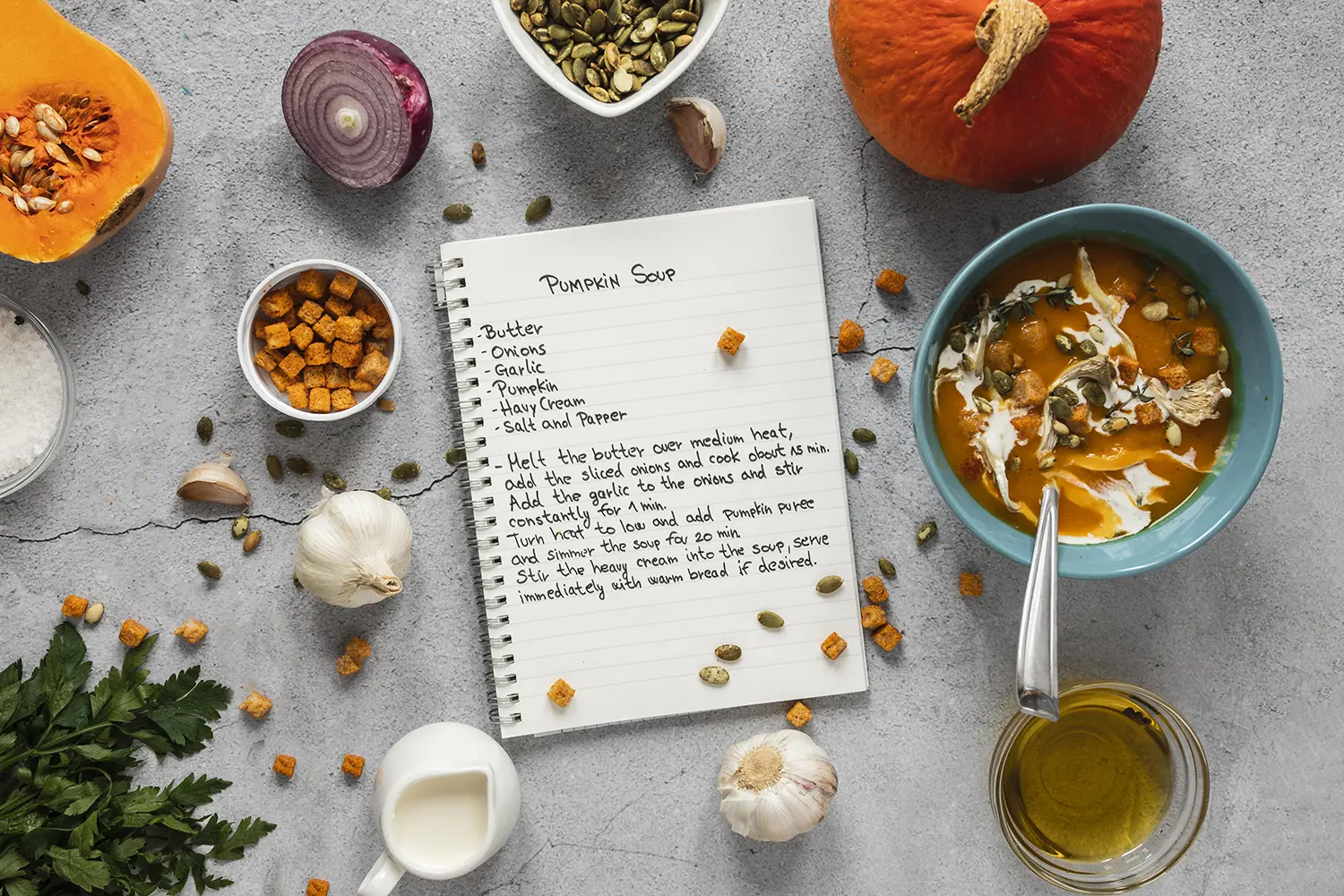The Secret Sauce: 9 Best WordPress Recipe Plugins to Make Your Food Blog a Google Star (Free & Premium Options)
Hello, fellow food creators and culinary entrepreneurs!
If you’re running a food blog on WordPress, you know it’s more than just sharing delicious recipes. It’s about presentation, structure, user experience, and—most importantly—SEO. A standard blog post just won’t cut it. You need a dedicated recipe format that is easy for your visitors to follow and easy for search engines to understand.
Why? Because when a user searches for “best chocolate chip cookie recipe,” Google doesn’t just look for keywords; it looks for highly structured data (Schema Markup) to display those beautiful “Rich Snippets” (star ratings, cook time, images) directly in the search results. Without a specialized recipe plugin, you’re invisible in the most competitive part of the search engine results page (SERP).
Over the years, we’ve seen countless food bloggers struggle with clunky recipe formats or complex code. That’s why we took the time to extensively test the most popular recipe plugins on real-world food blogs. We scrutinized their ease of use, feature sets, performance impact, and—most critically—their SEO capabilities.
In this ultimate guide, we’ll dive into the 9 Best WordPress Recipe Plugins, helping you choose the perfect tool to transform your humble recipe post into a high-converting, Google-friendly superstar.
Ready to find your blog’s secret sauce? Let’s get cooking!
Why a Dedicated Recipe Plugin is Essential for Food Blog SEO
Before we explore the tools, let’s nail down why you can’t rely on simple bullet points or tables for your recipes. It all comes down to Recipe Schema Markup.
1. Rich Snippets and SERP Dominance
Recipe Schema is structured data code that tells search engines, “Hey, this page is a recipe! Here are the ingredients, the total time, the calorie count, and the user ratings.”
When Google reads this structured data, it rewards your content by displaying Rich Snippets. These are the eye-catching elements that appear right under your title in the search results:
- Star Rating: Social proof is instantly visible.
- Image Thumbnail: Visual appeal that draws the eye.
- Cook Time/Prep Time: Practical information for the user.
These snippets dramatically increase your Click-Through Rate (CTR), even if you aren’t ranking #1.
2. User Experience (UX) and Engagement
A plugin creates a dedicated, clean, and interactive recipe card that enhances UX:
- Print Functionality: Visitors can print a clean version without ads or extra text.
- Adjustable Servings: Users can automatically scale ingredients for a smaller or larger batch.
- “Jump to Recipe” Button: A lifesaver for mobile users who want to skip your (SEO-friendly) introductory story.
A better UX means visitors stay longer, consume more content, and are more likely to return.
Our Top Expert Picks: The 9 Best WordPress Recipe Plugins
Based on our extensive testing across criteria like ease of use, technical features (Schema), reliability, and performance, here are our top recommendations for every type of food blogger.
🥇 1. WP Tasty Recipes

WP Tasty Recipes (developed by the team behind the highly successful food blog Pinch of Yum) is widely regarded as the best, most comprehensive premium solution on the market. It’s built by food bloggers, for food bloggers, making its feature set incredibly intuitive and complete.
| Key Strengths | Ideal For | Pricing |
| Complete Recipe Schema (Rich Snippets), Jump to Recipe, Nutrifox Integration. | Full-time food bloggers, professional recipe sites, and those prioritizing SEO and monetization. | Premium (Starts at $49/year) |
Why It Dominates:
- Seamless Block Integration: Uses a custom ‘Tasty Recipes’ block that makes adding and editing recipes in the Gutenberg editor effortless.
- Monetization Ready: Allows for easy insertion of affiliate links directly into your ingredient list.
- Nutritional Facts Integration: Integrates perfectly with services like Nutrifox to automatically generate accurate nutritional information, which is a major Google requirement and a massive user benefit.
- Conversion Tool: Includes an adjustable servings feature, automatically updating ingredient quantities.
The Verdict: If your food blog is a business, WP Tasty Recipes is an investment that pays for itself quickly through higher search rankings and improved affiliate revenue. It is the gold standard.
🥈 2. All in One SEO (AIOSEO)

While technically a holistic SEO plugin, All in One SEO (AIOSEO) earns a top spot because it offers a powerful Recipe Schema Generator as part of its feature set. For bloggers already using or considering AIOSEO for their overall SEO strategy, this is a streamlined approach.
| Key Strengths | Ideal For | Pricing |
| Deep Schema Integration, Global SEO Tools (Sitemaps, Link Assistant, etc.) | Bloggers already committed to AIOSEO, or those prioritizing Schema Markup and advanced SEO features over visual recipe card design. | Freemium (Schema feature is Premium, starts at $49.60/year) |
Why It’s a Top Pick:
- Precision Schema: Allows you to input every detail required by Google Schema: cuisine type, cook time, calories, ingredients, and more, ensuring maximum Rich Snippet potential.
- Efficiency: You manage your SEO metadata and Recipe Schema all within one single, highly trusted plugin dashboard.
The Verdict: A powerful choice for the SEO-savvy blogger. While it doesn’t provide the visual templates of dedicated recipe plugins, it ensures your recipe data is perfectly structured for search engines.
🥉 3. Recipe Card Blocks

Recipe Card Blocks is designed specifically to work natively within the WordPress Block Editor (Gutenberg). It offers a beautiful balance between design flexibility and essential SEO features.
| Key Strengths | Ideal For | Pricing |
| Native Gutenberg Blocks, Customizable Templates, Unit Conversion. | Bloggers who prefer the native WordPress editor and want attractive, feature-rich cards without heavy shortcodes. | Freemium (Premium starts at $59/year) |
Why We Like It:
- Visual Appeal: Offers customizable, pre-made templates that are visually appealing and mobile-responsive.
- Nutrition Block: Allows you to easily display nutritional information alongside your recipe card.
- Interactive Ingredients: Features unit conversion, letting readers instantly toggle between US customary and metric units—a fantastic UX feature.
The Verdict: A well-rounded choice that appeals to users who appreciate the modern, block-based WordPress editing experience and need strong SEO fundamentals.
4. WP Recipe Maker

WP Recipe Maker is an extremely popular and user-friendly plugin known for its stability and commitment to both SEO and user engagement features.
| Key Strengths | Ideal For | Pricing |
| User Submissions, Bulk Editing, Pinterest Optimization, JSON-LD Schema. | Sites aiming to build a community, accept guest recipes, or heavily rely on Pinterest traffic for growth. | Freemium (Premium starts at $49/year) |
Why It Stands Out:
- Recipe Submission Form: The premium version includes a built-in form that allows users to submit their own recipes, making it ideal for community blogs or recipe roundups.
- Pinterest Optimization: Generates “Pinnable” images and relevant metadata specifically optimized for Pinterest, which remains a massive traffic driver for food content.
- Feature Rich: Includes nutritional labels, conversion tools, ingredient groups, and strong search/filter capabilities for a large recipe index.
5. Zip Recipes

Zip Recipes is a great solution for those who want quick, effective SEO optimization without being overwhelmed by excessive features.
- Core Strength: Focus on JSON-LD and Microdata for Google Rich Snippets. | Pricing: Freemium (Premium starts at $20/year) |
- Why It Works: It keeps things simple. It’s designed to automatically optimize your content for search engines using JSON-LD schema, ensuring your recipes get those coveted Rich Snippets quickly. It’s perfect for the blogger who needs to prioritize SEO setup speed.
6. WP Delicious

WP Delicious is a scheme-enabled plugin that focuses on building an active community around your recipes through engagement features.
- Core Strength: Recipe Library, User Registration, Favorites, and Ratings. | Pricing: Freemium (Premium starts at $59/year) |
- Why It Excels: It goes beyond the card. It allows users to register, save recipes as favorites, and rate your dishes, which is excellent for creating a loyal, returning audience. It also offers a searchable “recipe library” that acts as a robust index for your content.
7. Create

Create is an excellent, completely free option for those just starting out who need a high-quality, lightweight solution without any cost barriers.
- Core Strength: Completely Free, Lightweight, and Ad-Optimized Templates. | Pricing: Free |
- Why It’s a Great Start: It’s simple, mobile-responsive, and comes with five built-in card designs. It automatically generates Schema Markup and is even compatible with AMP, which is great for mobile speed. While it lacks the advanced features (like user submissions or deep analytics), it provides all the necessary tools to launch a simple, SEO-optimized food blog for free.
8. Cooked – Recipe Management

Cooked is another strong free contender that emphasizes ease of use with its drag-and-drop interface.
- Core Strength: Intuitive Drag-and-Drop Interface, Ingredient Substitution Suggestions. | Pricing: Free |
- Why We Recommend It: It provides a simple, clean interface for adding all core recipe information (ingredients, instructions, time, nutrition). A unique feature is its ability to suggest ingredient substitutions based on dietary needs (e.g., almond flour for gluten-free), which adds great value for diverse audiences.
9. Chicory Shoppable Recipes

Chicory Shoppable Recipes takes a different approach by creating a dedicated custom post type for your recipes. This structure is excellent for organization and long-term content management.
- Core Strength: Custom Post Type Creation, Advanced Categorization, Multilingual Support. | Pricing: Free |
- Why It’s Good for Organization: By separating recipes into a unique post type, it makes bulk editing, indexing, and advanced categorization cleaner. It supports grouping ingredients and instructions and is optimized for SEO, including a ratings/review feature.
Choosing Your Plugin: An Expert’s Decision Matrix
Selecting the right plugin is about aligning features with your ultimate business goal:
| Your Primary Goal | The Recommended Plugin | The Feature That Matters Most |
| Monetization & Professionalism | WP Tasty Recipes | Seamless Nutrifox integration & highest SEO optimization. |
| Affordable E-commerce Integration | WP Delicious | WooCommerce integration for selling recipes or merchandise. |
| Building a Community (User-Generated Content) | WP Recipe Maker | Built-in Recipe Submission Form for user engagement. |
| Prioritizing Schema & Global SEO | All in One SEO (AIOSEO) | Advanced, reliable, and integrated Recipe Schema Generator. |
| Starting on a Zero Budget | Create | 100% Free, lightweight, and features essential Schema Markup. |
| Simple, Clean Design & Usability | Recipe Card Blocks | Native Gutenberg blocks and intuitive Unit Conversion. |
Beyond the Plugin: Optimizing Your Recipe Strategy for Google
Installing the best plugin is only half the battle. To truly dominate the SERP, you need a holistic strategy.
1. Master Your Recipe Taxonomy
Recipe plugins allow for advanced categorization. Don’t just rely on standard tags. Use the custom taxonomies provided by your plugin:
- Cuisine Type: Italian, Mexican, Vegan, Keto, etc.
- Meal Type: Breakfast, Dessert, Appetizer, Dinner.
- Dietary Restrictions: Gluten-Free, Dairy-Free, Low-Carb.
This structure allows users to filter your content efficiently and helps Google understand the depth of your recipe database.
2. Optimize Your Recipe Images (A Hidden SEO Win)
Food content is visual, but large images slow down your site, hurting your Core Web Vitals (a key SEO ranking factor).
- Compression: Always compress images using a plugin like Smush or Imagify before uploading.
- File Size: Keep image file sizes below 100KB wherever possible.
- Recipe Card Image: Use the designated field in your plugin for the primary recipe image, as this image is often the one that appears in Google’s Rich Snippets and Pinterest.
3. Implement the “Jump to Recipe” Feature
As mentioned, most users on mobile devices want to skip the intro story. Use the “Jump to Recipe” button feature to improve user satisfaction, which is a positive signal to Google. This keeps your introductory text (where you can naturally weave in secondary keywords) intact for SEO purposes, while prioritizing user convenience.
4. Leverage User Ratings and Reviews
Rich Snippets look beautiful, but they need user data. Encourage ratings and reviews on your recipes.
- The star ratings displayed on Google come directly from user input. A higher average rating (4.5 stars and above) on the SERP significantly increases your CTR.
- Make sure your chosen plugin (like WP Tasty Recipes or WP Recipe Maker) supports this feature and clearly prompts users to leave feedback.
Final Thoughts: Invest in Your Foundation
Choosing the right recipe plugin is perhaps the most important foundational decision you’ll make for your food blog’s long-term success. It directly impacts your SEO visibility, your user engagement, and ultimately, your ability to grow and monetize your content.
Whether you opt for the professional suite of WP Tasty Recipes or the budget-friendly Create plugin, ensure that your choice prioritizes valid Schema Markup and a clean, mobile-first user experience.
With the right tool in place, you can stop worrying about code and start focusing on what you do best: creating mouth-watering, traffic-driving, and star-rated recipes!
Share Post:







